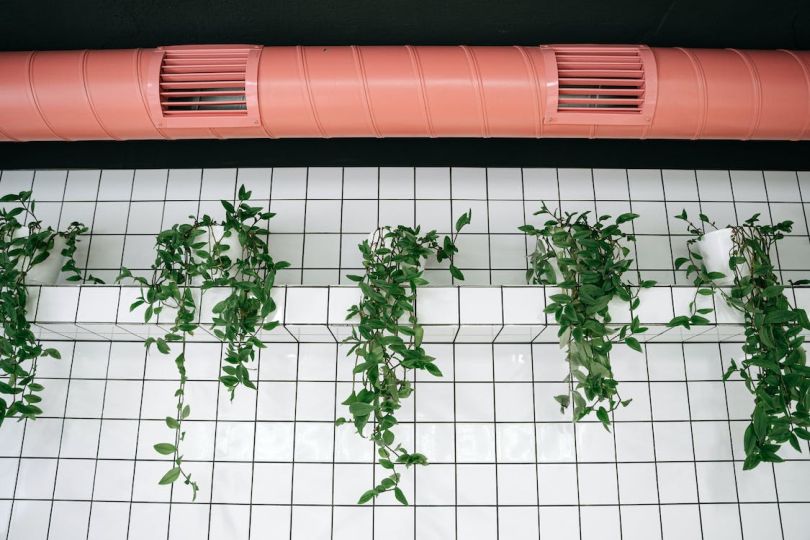How To Improve Indoor Air Quality?
Breathing clean air is essential for our well-being, but did you know that indoor air quality can be up to five times worse than outdoor air? Yes, you read it right! Poor indoor air quality can cause allergies, respiratory problems and even impact your productivity. Fortunately, there are simple steps you can take to improve the air quality in your home or office. In this blog post, we’ll share some tips on how to keep the environment clean, ventilate the space properly and use air purifiers effectively.

Keep a Clean Environment
A clean environment is the first step towards improving indoor air quality, but a good and clean environment can mean a lot of things. Regular cleaning can significantly reduce dust, pollen, and other allergens in your home or office. Start with decluttering and removing items that tend to accumulate dust such as books, magazines, and knick-knacks. Next, tackle surfaces like floors, carpets, furniture, and countertops. Use a vacuum cleaner equipped with a HEPA filter to remove dirt effectively without releasing it back into the air. Also, change HVAC filters every three months at least (or more often if you have pets) to keep the system running efficiently while filtering out airborne pollutants. To be more certain, consider hiring HVAC experts for regular maintenance, whether from Ideal Conditions or your local HVAC experts. In the end, make sure you dust hard surfaces with microfiber cloths or electrostatic dusters that trap particles instead of spreading them around. Don’t forget to wash bedding regularly using hot water above 130°F to kill mites and bacteria.
Ventilate Your Space
Without it, pollutants can accumulate and cause respiratory problems. Here are some tips on how to properly ventilate your space. Open your windows regularly to let fresh air circulate throughout your home or office. This will help remove stale air and bring in clean outdoor air. If you live in a busy city with high levels of pollution, consider using an air purifier with a HEPA filter to trap harmful particles before they enter your living space. Another way to improve ventilation is by installing exhaust fans in areas that generate moisture such as bathrooms and kitchens. These fans will help remove excess moisture which can lead to mold growth and other health hazards. On the other hand, make sure that your HVAC system’s filters are cleaned or replaced regularly as clogged filters reduce airflow leading to poor indoor air quality. If you have pets at home, ensure their litter boxes are well-ventilated because pet dander could trigger allergies leading to asthma attacks.
Use Air Purifiers
Air purifiers work by removing airborne contaminants such as dust, allergens, smoke, and other pollutants from the air. There are many types of air purifiers available on the market that use different technologies to clean the air. HEPA (high-efficiency particulate air) filters are considered to be the most effective type of filter for removing small particles from the air. These filters can capture up to 99.97% of particles as small as 0.3 microns in size. Activated carbon filters can also be used in conjunction with HEPA filters to remove odors and chemicals from the air. UV-C light technology is another option that can help kill bacteria and viruses in addition to filtering out larger particles. When choosing an air purifier, it’s important to consider factors such as room size, filter replacement costs, noise level, and energy usage. It’s also important to regularly replace or clean your purifier’s filters according to manufacturer recommendations in order for them to work effectively.
Monitor Humidity Levels
High humidity levels create a breeding ground for mold, mildew, and dust mites, which can trigger allergies and respiratory problems. On the other hand, low humidity can cause dry skin, irritation of nasal passages and throat, and static electricity buildup on surfaces like carpets. To ensure optimal indoor air quality, it’s essential to monitor humidity levels regularly using a hygrometer. The ideal relative humidity level should be between 30-50%, depending on your location’s climate conditions. If you find that your home has high humidity levels due to poor ventilation or water leaks from pipes or roofs causing dampness indoors; consider using dehumidifiers that help reduce excess moisture content in the environment.

Avoid Indoor Pollutants
These pollutants come from different sources, including cleaning products, smoking, and cooking. Avoiding them is crucial to improving the air quality in your home. To avoid indoor pollutants choose natural cleaning products instead of those with harsh chemicals. Many commercial cleaners contain toxic ingredients that can cause respiratory problems when used indoors. Consider using homemade alternatives like vinegar and baking soda for a safer option. You could also minimize indoor pollutants by avoiding smoking inside your home or car. Secondhand smoke contains hazardous toxins that can linger in the air and harm anyone who inhales it. Cooking also produces airborne particles that can worsen indoor air quality if not properly ventilated. Make sure you have proper ventilation such as an exhaust fan in your kitchen to remove these particles from the space effectively. Make sure you keep humidity levels low since high moisture levels promote mold growth which releases spores into the environment causing allergic reactions, especially in people with asthma or allergies.
Keeping a clean environment by dusting regularly, vacuuming carpets and rugs, washing bedding frequently, and keeping pets groomed can help remove allergens from the air. Ventilating your space by opening doors and windows or using exhaust fans can also improve air circulation. Using air purifiers equipped with HEPA filters can effectively capture tiny particles such as pollen, pet dander, smoke, and dust mites that are present in the air. Monitoring humidity levels to keep them between 30% to 50% prevents mold growth which contributes to poor indoor air quality. Avoiding indoor pollutants like smoking tobacco products indoors or burning candles excessively will result in better overall health outcomes for everyone living inside your home.
